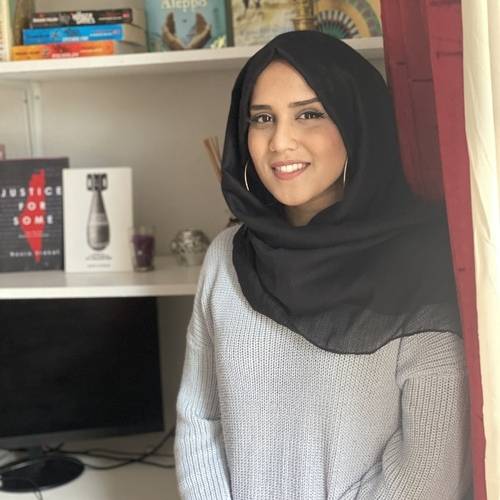“Oh, you’re Israeli.”
“No, I’m not Israeli! I’m Palestinian!”
He stared at me for a few seconds in silence and then continued, in the same neutral tone; “Listen, I don’t know of any country called Palestine. Look on the map: there’s Israel, there’s Jordan, there’s Syria… but there isn’t any Palestine.”
This is a personal take on a depressingly familiar theme; the lives and identity of the Palestinians following the 1948 Nakba — the “catastrophe”.
The testimonies of the Palestinians in Memories of 1948, whose lives were overturned after having survived through the crimes committed by Israel during its military conquest of West Jerusalem, not only centre on the aftermath of war, but also on how the division began; from Britain’s 1917 Balfour Declaration, which was encapsulated in the terms of the League of Nations British Mandate for Palestine in 1922 and set the stage for the full-scale ethnic cleansing that followed three decades after Balfour.
Author Chris Conti notes Israel’s systematic effort to hide evidence of the Nakba, and to erase and rewrite history, which is why she believes that it is imperative for the voices of Palestinians — between 75 and 95 years old, the pre-1948 generation and “the forgotten people of history” — to be given a platform to bear witness to that period.
For me, well-presented memoirs represent “the truth” about specific events, and in such situations as the Nakba, they may be the only way to cover extreme individual experiences effectively.
READ: Israel, Palestine and the Politics of Race
Offering direct accounts of the older Palestinian generation from various social backgrounds and occupations who still remember so vividly the British soldiers patrolling the streets of Jerusalem, the book gives readers an insight into how Britain exercised control over all aspects of Palestinian life, including the education system, that helped lay the groundwork for what would become modern Israel. An example is the Kadoorie Agricultural School, where Abd Al Rahman Al Najjab was educated, which was divided into two establishments: “[T]he segregation that was instituted by the British seemed unhealthy to me. Why build two schools to separate the Arab Palestinian from the Jewish students, while the Palestinians, until then, wanted to maintain a certain degree of coexistence?”
Despite the horrors of the large-scale, systematic atrocities committed by Jewish militias and the nascent Israeli state and its advocates which became more extreme by the day, the survivors quoted in the book who were children during the war represent Palestinians all over the world who still hold onto the belief that, somehow, the day will come when the dispossessed nation will return to its homeland. The hopes contained in each account speak much louder than the evil and suffering, which is very different from the many “woe-is-me” memoirs so much in fashion these days. Instead, readers will discover that there is a poet within every Palestinian in exile who dares to challenge the Israeli narrative that has dominated politics and the media ever since 1948.
The book provides a series of personal accounts in a narrative that barely pauses for breath as the Palestinians who survived the Nakba now have to watch as their houses are razed to the ground so that settler-only roads can be built to service the illegal settlements. And while barbed wire fences and the apartheid wall strangle the occupied West Bank by restricting the free movement of people and goods.
“To be a Palestinian is to have been chased out of your country without being allowed to take what belonged to you,” explains Feissal Darraj, 76. “Palestine is the place that was taken from us. Right from 1916 with the Sykes-Picot agreement, and then 1917 with the Balfour Declaration, the great powers sealed our fate. We were the sacrifice.”
What links all of the memoirs is respect for the political activists and fighters who fought for Palestine in different ways, particularly those who did not survive, such as Abd Al Qadir Al Husseini, a fighter from the “Arab Revolt” of 1936-1939 who was killed by Zionists in Qastal. Another figure mentioned repeatedly is Mahmoud Darwish, who carried the Palestinian cause through his poetry.
READ: Where the Bird Disappeared
Readers will learn about real Palestinian heroes whose bravery should never be forgotten. In the process, they will learn a lot about business and the economic system in operation during that period.
The possibility for an idyllic childhood in Palestine before 1948 in a society rich with culture and religious diversity will establish an emotional connection for many readers. This is something that is usually overlooked when the more dramatic and politicised atrocities are under discussion. The personal domestic touches help to build a picture of Palestinian society that rarely, if ever, makes it into the mainstream media.
“Our house,” remembers Sohaila Souby Shishtawi from Jerusalem, “did not have electricity yet (only the wealthier homes in Jerusalem had power): it was lit, like the houses in the neighbourhood, by paraffin lamps, like those that lit the alleyways at night, giving the old town its golden and mysterious atmosphere.”
The impact of the simplicity of the language in this book was overwhelming. Overall, it reminds readers that Palestinians all over the world will continue to remember and resist, for as long as the reasons for their dispossession exist. It may be Chris Conti’s name on the cover, but this book definitely belongs to the Palestinians, for which we should be thankful.












